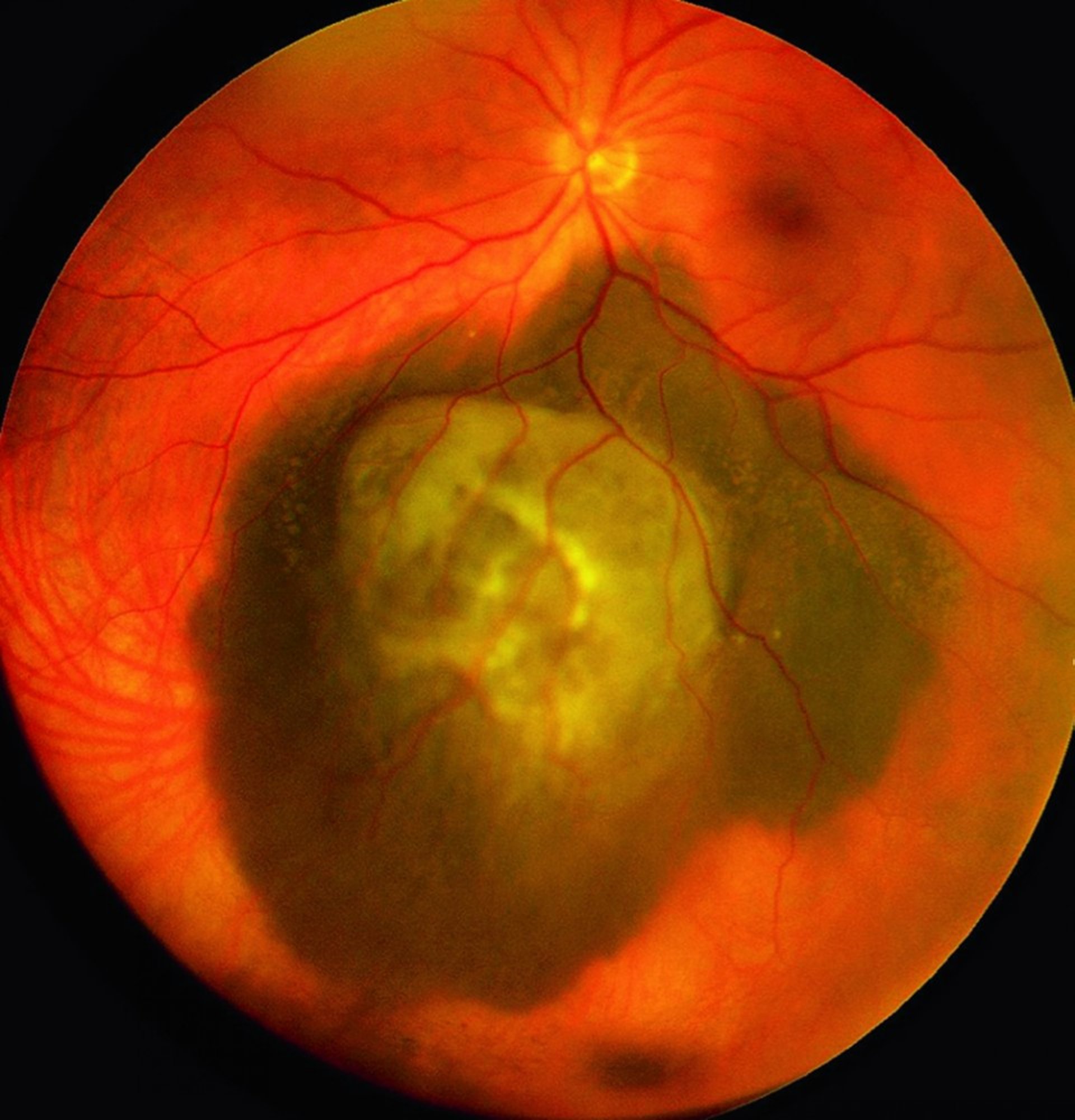- Age-Related Macular Degeneration (AMD or ARMD)
- Cancers Affecting the Retina
- Central Retinal Artery Occlusion and Branch Retinal Artery Occlusion
- Central Retinal Vein Occlusion and Branch Retinal Vein Occlusion
- Diabetic Retinopathy
- Epiretinal Membrane
- Hypertensive Retinopathy
- Retinal Detachment
- Retinitis Pigmentosa
Topic Resources
Cancers affecting the retina usually begin in the choroid, the vascular layer of tissue between the sclera and retina. Because the retina depends on the choroid for its support and half of its blood supply, damage to the choroid by a cancer is likely to affect vision.
Choroidal Melanoma
Choroidal melanoma originates from choroidal melanocytes. Choroidal melanoma is the most common cancer originating in the eye, with an incidence of about 1 in 2500 White people. It is less common among darker-skinned people. It occurs most frequently at age 55 to 60 (1). It may spread locally or metastasize and be fatal.
Symptoms tend to develop late and include loss of vision and symptoms of retinal detachment.
© Springer Science+Business Media
Diagnosis is by funduscopy, supplemented, when indicated, by other tests, such as ultrasonography, CT, fluorescein angiography, and serial photographs.Diagnosis is by funduscopy, supplemented, when indicated, by other tests, such as ultrasonography, CT, fluorescein angiography, and serial photographs.
Small cancers are treated with laser, radiation, or radioactive implants, which may preserve vision and save the eye. Rarely, local resection is used. Large cancers may require enucleation.
General reference
1. Aronow ME, Topham AK, Singh AD: Uveal melanoma: 5-year update on incidence, treatment, and survival (SEER 1973-2013). Ocul Oncol Pathol 4:145–151. Ocul Oncol Pathol 4:145–151, 2018. doi: 10.1159/000480640
Choroidal Metastases
Choroidal metastases are common because the choroid is highly vascular. The most common primary cancers are those of the breast in women and of the lung in men (1).
Symptoms tend to develop late and include loss of vision and symptoms of retinal detachment.
Diagnosis is often incidental during routine ophthalmoscopy. Ultrasonography is usually done, and the diagnosis is confirmed using fine-needle biopsy.
Treatment depends on the primary cancer and usually involves systemic chemotherapy, radiation therapy, or both.
General reference
1. Arepalli S, Kaliki S, Shields CL: Choroidal metastases: Origin, features, and therapy. Indian J Ophthalmol 63(2):122-127, 2015. doi: 10.4103/0301-4738.154380


